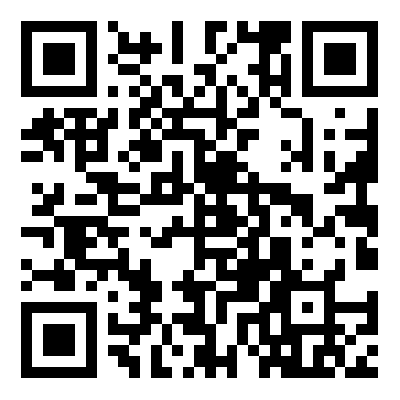
How to use the medical test paper kit?
Release time:
2023-01-10 13:51
author:
The production of medical test paper kit tells you that antigen detection has the advantages of convenience, speed and low cost compared with nucleic acid detection. Ordinary people can easily achieve home detection.
How to use the medical test paper kit?
The production of medical test paper kit tells you that antigen detection has the advantages of convenience, speed and low cost compared with nucleic acid detection. Ordinary people can easily achieve home detection. The time to obtain the antigen detection result is within 20 minutes, which can quickly find the infected person and reduce the exposure risk to a certain extent. After the emergence of Omixjon virus strain, due to its stronger immune escape activity and infectivity, the epidemic continued to break out in the world. Sporadic and clustered outbreaks occurred in various parts of China, and the demand for nucleic acid detection showed an exponential growth trend. Therefore, domestic nucleic acid detection adopts mixed detection, from "5 mixed 1", "10 mixed 1" to "20 mixed 1", to meet the growing demand for nucleic acid detection. Antigen detection products can alleviate the detection pressure and provide a good supplement for nucleic acid detection.
Experts believe that the accuracy of antigen detection is related to many factors and needs to be operated in strict accordance with specifications. Antigen detection has four steps:
Medical test paper kit production tells you
1、 Preparations before antigen detection. 1. Wash hands. Wash hands with flowing water or hand sanitizer. 2. Understand the test process. Carefully read the instructions of antigen detection reagents and precautions related to antigen detection. 3. Reagent preparation. Check whether the antigen detection reagent is within the shelf life, and check whether the contents of nasal swabs, sampling tubes, test cards and other items are lost or damaged. If the reagent expires or its contents are lost or damaged, replace the test reagent in time. 4. Confirm the environmental temperature and humidity requirements for the test. The colloidal gold test strip is generally required to be tested at 14 ℃~30 ℃ to avoid abnormal test results caused by overcooling, overheating or excessive humidity. After unpacking, the antigen detection card should be placed in a flat and clean place.
Second, sample collection. People over 14 years old can collect nasal swab samples by themselves. The self-taught examiner first blows his nose with toilet paper. Carefully remove the outer package of the nasal swab to avoid touching the swab head. Then tilt the head slightly, hold the tail of the swab with one hand and stick it on one side of the nostril to enter, slowly push the swab back 1~1.5 cm along the bottom of the lower nasal canal, and then rotate the nasal cavity for at least 4 circles (the retention time is not less than 15 seconds), and then use the same swab to repeat the same operation on the other nasal cavity. Self-study examiners aged 2-14 should be sampled by other adults. When sampling, blow your nose with toilet paper, and then tilt your head slightly. The sampling personnel carefully opened the outer package of the nasal swab to avoid touching the head of the swab with their hands. Grasp the head of the subject gently with one hand, and stick the swab on one nostril to enter, slowly penetrate 1 cm backward along the bottom of the lower nasal tract, and then stick the swab on the nasal cavity to rotate at least 4 circles (the retention time is not less than 15 seconds), and then use the same swab to repeat the same operation on the other nasal cavity.
Third, antigen detection. 1. The production of medical test paper kit tells you to put the nasal swab into the sampling tube immediately after collecting the sample according to the reagent specification. The swab head shall be rotated and mixed in the storage solution for at least 30 seconds. At the same time, squeeze the swab head on the outer wall of the sampling tube by hand at least 5 times to ensure that the sample is completely eluted in the sampling tube. 2. Squeeze the liquid in the swab head by hand through the outer wall of the sampling tube, and then discard the swab. After covering the sampling tube, drop the liquid vertically into the sampling hole of the detection card.
Fourth, wait for a certain time to explain the results according to the reagent description. Positive results: red or purple bands are displayed at "C" and "T", and "T" bands can be dark or light, which is a positive result. Negative results: red or purple stripes are displayed at "C", and no stripes are displayed at "T". Invalid result: no red or purple band is displayed at "C", regardless of whether it is displayed at "T" or not. The result is invalid, and the test paper needs to be taken again for retest.
10
2023
-
01
How to polish the die casting of security camera
The appearance technology of the security camera die casting is rich, and the appearance effect of the security camera die casting is very beautiful. How to polish the security camera die-casting parts? Now let's have a look at the relevant content. I believe you can have a more detailed understanding.
18
2025
-
06
Exploring the Top Companies for Stamping Die Punches: A Comprehensive Guide
Exploring the Top Companies for Stamping Die Punches In the realm of manufacturing, the precision and efficiency of stamping processes play a crucial role in determining product quality. At the heart of these processes lie stamping die punches, essential components that shape metal parts with accuracy and consistency. As industries continue to evolve, several companies have emerged as leaders in p
17
2025
-
06

